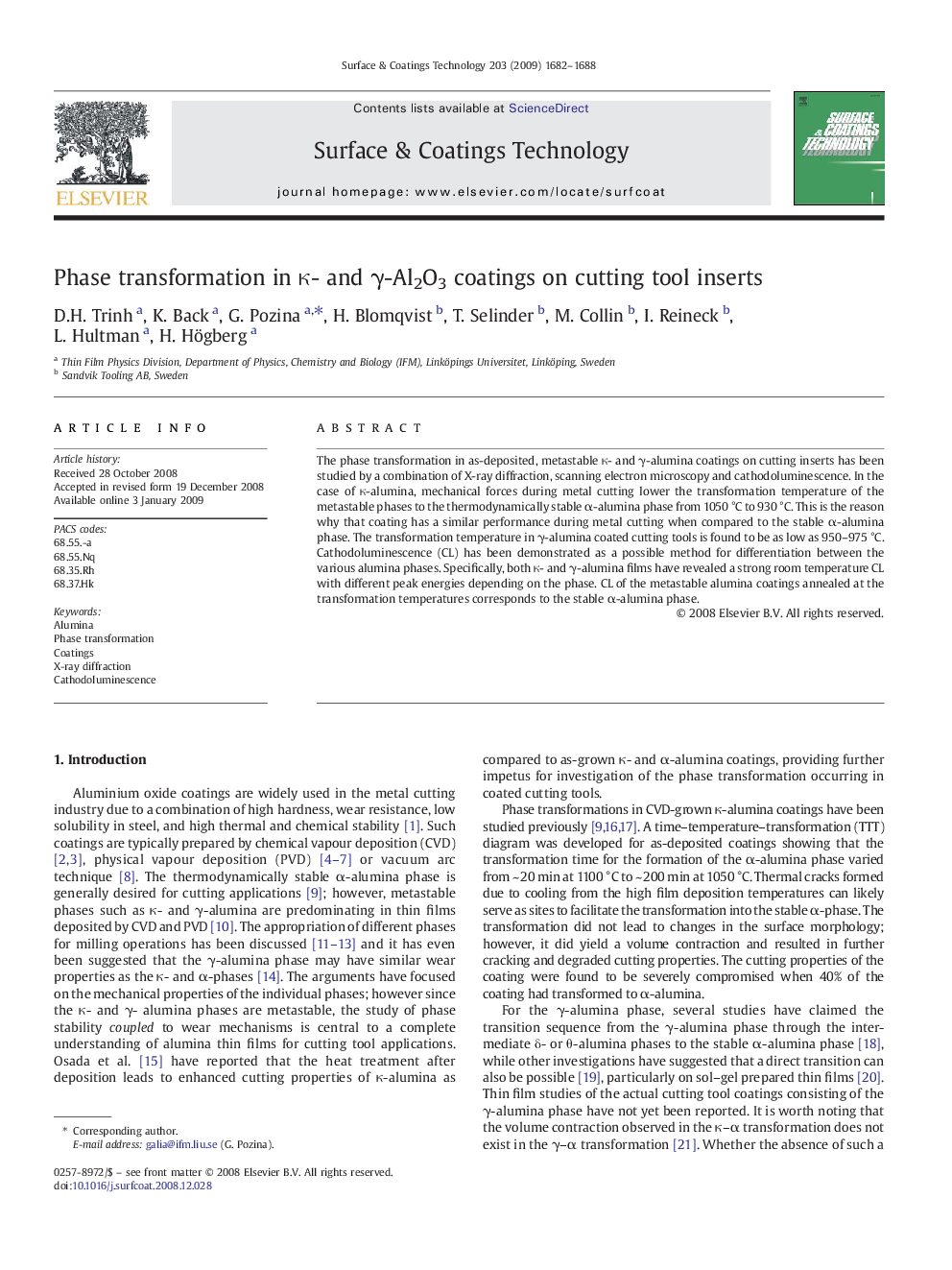| Article ID | Journal | Published Year | Pages | File Type |
|---|---|---|---|---|
| 1660751 | Surface and Coatings Technology | 2009 | 7 Pages |
The phase transformation in as-deposited, metastable κ- and γ-alumina coatings on cutting inserts has been studied by a combination of X-ray diffraction, scanning electron microscopy and cathodoluminescence. In the case of κ-alumina, mechanical forces during metal cutting lower the transformation temperature of the metastable phases to the thermodynamically stable α-alumina phase from 1050 °C to 930 °C. This is the reason why that coating has a similar performance during metal cutting when compared to the stable α-alumina phase. The transformation temperature in γ-alumina coated cutting tools is found to be as low as 950–975 °C. Cathodoluminescence (CL) has been demonstrated as a possible method for differentiation between the various alumina phases. Specifically, both κ- and γ-alumina films have revealed a strong room temperature CL with different peak energies depending on the phase. CL of the metastable alumina coatings annealed at the transformation temperatures corresponds to the stable α-alumina phase.
